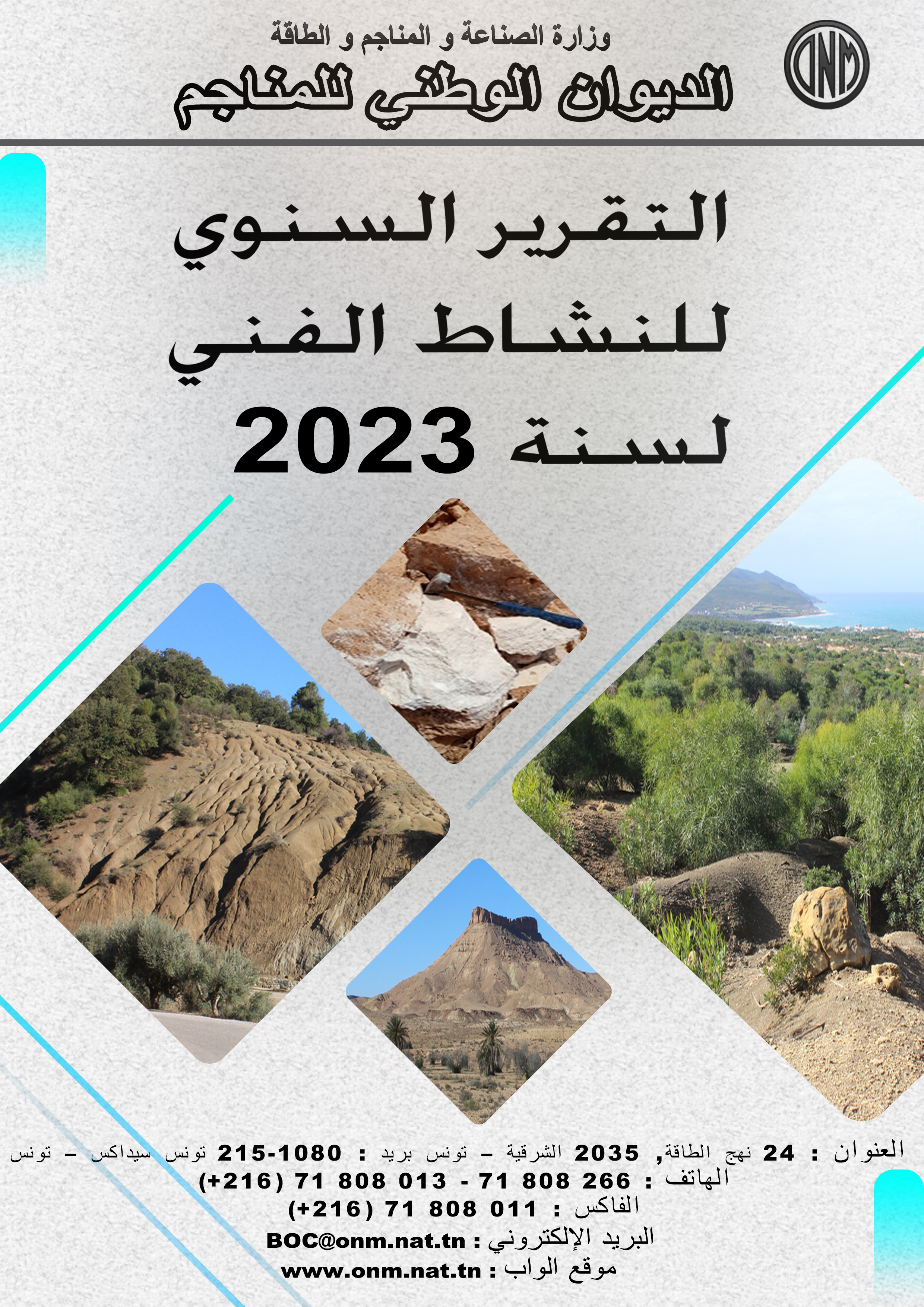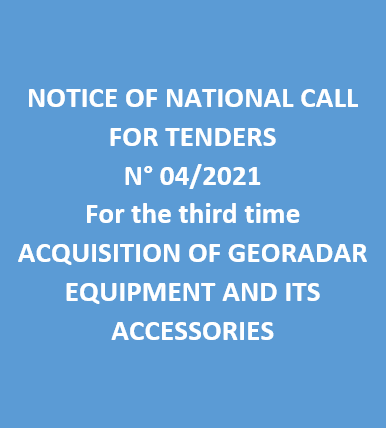| Annual program and technical progress report |
-

Technical Program 2025
-

Activity Report 2023
|
| Geocatalogue |

|
| Invitation to
tender |
-

REALIZATION OF THE TRAINING PLAN FOR THE YEAR 2022
-

ACQUISITION OF TWO SERVICE CARS
-

ACQUISITION OF GEORADAR EQUIPMENT AND ITS ACCESSORIES
|
|
Invest in Tunisia |

|
|
|
|
|
::
Documentation and Editions
>>
Research library
|
| |
|
[
Search by author
]
[
Search keyword
]
[
Search by index
]
[
Search by category
]
|
title of the reference :
|
Deposition, diagenesis and porosity development of the Lower-Middle Turonien carbonate reservoir in Central Tunisia.
|
|
Publication Date:
|
1998
|
|
Author :
|
Troudi Habib, M'rabet Ali, Troudi Habib
|
|
Catalogue type :
|
Livre
|
|
Catalogue reference :
|
Deposition, diagenesis and porosity development of the Lower-Middle Turonien carbonate reservoir in Central Tunisia. The Lower-Middle Turonian: Bireno carbonates member contains proven economic petroleum reserves and remains an active exploration target in East Central Tunisia where numerous oil fields have been discovered. It consisits of up to 120 m of intertidal and Shallow subtidal facies. According to the sedimentary characteristics the Bireno member indicate the development of prograditional and then aggraditional carbonate plateform. This plateform was affected by distensive Turonien tectonisme, which was responsible for the lateral facies change. Detailed petrography study of this carbonate allowed inferring the reconstruction of the diagenetic sequence. This included micritization, cementation, dolomitization and dissolution. The earliest diagenetic evidence is represented by Micritized peripheral areas of bioclasts and micritized peloids, isopachious fine-textured calcite and fibrous calcite in multiple layers around grains .This cement occludes primary intergranular pore spaces alone polygonal compromised boundaries. Both processes are interpreted to hace occured in a marine phretic environment. In addition, several phases of dolomitization-dissolution combine differentiated during a shallow burial environment. The Lower-Middle Turonien carbonate plateform exemple Tunisia displays good primary porosity during the course of burial, high secondary porosity related to dedolomitization appeared. However a major part of porosity was produced when the reservoir was fractured during the atlasic tectonic events.
porosité ; diagenèse ; dépôt ; Turonien ; roche mère hydrocarbure ; roche carbonatée ; lithologie ; paléogéographie ; plateforme carbonatée ; gaz naturel ; fracturation ; microscopie électronique ; microfaciès ; Tunisie ; Tunisie Centrale ; Tunisie Orientale-Sahel ; Ile de Kasserine ; J. Selloum M'rabet Ali Troudi Habib Troudi Habib Roches sédimentaires
|
|
Indexation decimale :
|
Roches sédimentaires
|
|
Keywords :
|
porosité ; diagenèse ; dépôt ; Turonien ; roche mère hydrocarbure ; roche carbonatée ; lithologie ; paléogéographie ; plateforme carbonatée ; gaz naturel ; fracturation ; microscopie électronique ; microfaciès ; Tunisie ; Tunisie Centrale ; Tunisie Orientale-Sahel ; Ile de Kasserine ; J. Selloum
|
|
Summary :
|
The Lower-Middle Turonian: Bireno carbonates member contains proven economic petroleum reserves and remains an active exploration target in East Central Tunisia where numerous oil fields have been discovered. It consisits of up to 120 m of intertidal and Shallow subtidal facies. According to the sedimentary characteristics the Bireno member indicate the development of prograditional and then aggraditional carbonate plateform. This plateform was affected by distensive Turonien tectonisme, which was responsible for the lateral facies change. Detailed petrography study of this carbonate allowed inferring the reconstruction of the diagenetic sequence. This included micritization, cementation, dolomitization and dissolution. The earliest diagenetic evidence is represented by Micritized peripheral areas of bioclasts and micritized peloids, isopachious fine-textured calcite and fibrous calcite in multiple layers around grains .This cement occludes primary intergranular pore spaces alone polygonal compromised boundaries. Both processes are interpreted to hace occured in a marine phretic environment. In addition, several phases of dolomitization-dissolution combine differentiated during a shallow burial environment. The Lower-Middle Turonien carbonate plateform exemple Tunisia displays good primary porosity during the course of burial, high secondary porosity related to dedolomitization appeared. However a major part of porosity was produced when the reservoir was fractured during the atlasic tectonic events.
|
|
Exemplaries :
|
-
|
|
|
|
|
|
|
|



